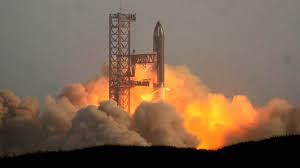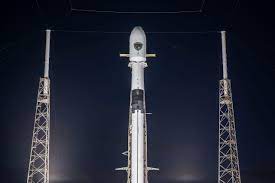Vallejarian Space Program
The Vallejar's Space Program, established in 1968 by decree of King Carlos X of Alhama la Nueva, represents a pivotal milestone in the nation's exploration and technological development in the Vallos region. Founded with the dual purpose of advancing both civilian space research and military technology, this program has been a crucial driver of technological advancement in the country, serving as a strategic response to technological advancements made by regional counterparts.
Agencia Espacial Vallejariana | |
 | |
| Agency overview | |
|---|---|
| Abbreviation | AEV |
| Formed | 1968 |
| Type | Spacial Agency |
| Jurisdiction | Vallejar |
| Status | Active |
| Motto | "Más allá del cielo" |
| Official languages | Spanish, English |
| Primary spaceport | Spaceport of Alcantarilla |
| Owner | Government of Vallejar |
| Employees | 7832 (2032) |
History
The program's inception in 1968 marked a historic moment in Vallejar's ambition to delve into space exploration and development. Under the leadership of King Carlos X of Alhama la Nueva, father of the current monarch, David II of Alhama la Nueva, a platform was established for the continuous development of space technologies, in addition to the space program, the Vallejarian Space Agency was also created and established, which would be the public body, and managed by the government, together with private aerospace exploration and development companies, to complete the program planned by the king, this agency would have the capacity and total freedom on the issues of aerospace sovereignty and security, in addition to being able to invest freely in any area that helps carry out the objectives.
Structure and Objectives
The Vallejar Space Program is governed by the following established objectives:
Phase 1: Technological Development: This phase aims to lay the technological groundwork for future missions. It focuses on developing national space and aeronautical technology, as well as training highly qualified personnel for the program.
Phase 2: Satellite Communications: Implementation of an autonomous satellite communications system for the nation and other interested countries. Collaboration with external entities for investments and joint services will be sought.
Phase 3: Permanent Space Station: Construction of a national space station in Earth's orbit to serve as an operations center for space missions. This station will be a milestone for space exploration and research development.
Phase 4: Lunar Analysis: Detailed analysis of the lunar surface to identify optimal landing sites, establish an initial camp, and determine resource extraction sites. This phase sets the groundwork for future missions and potential lunar colonies.
Phase 5: Lunar Establishment: This phase will focus on the progressive establishment of infrastructure on the Moon, including pressurized habitats, scientific laboratories, energy systems, and resource recycling. A regular transportation system from Earth will also be planned.
Phase 6: Interplanetary Exploration: The final phase involves expansion towards Mars, using the Moon as a starting point for establishing a permanent human presence on the Red Planet. This will require maximizing efficiency and cost reduction.
Notable Missions:
National Space Independence (2011):
Vallejar gained the capability to autonomously launch satellites, probes, and spacecraft starting from October 2011.

Construction of the National Space Station (2013-2018):
Construction of the space station began in 2013 and concluded in 2018 with a total investment of 156.7 billion. The Vallejarian administration contributed 94.5 billion, while the remainder was financed by private investors and various entities.
Second Phase of the Space Station (2018-2021):
During this period, modifications and minor changes were made to the space station, optimizing its capabilities for future missions.
Space Fire Mission (2019):
The mission conducted on April 4, 2019, known as "Space Fire," resulted in the discovery and subsequent diversion of an asteroid similar to the one that wiped out the dinosaurs in the solar system.

First Vallejarian Moon Landing (2025):
This historic mission allowed the first four Vallejarians to set foot on the lunar surface, collecting vital data for Vallejar's research centers and leaving infrastructure and autonomous robots on the lunar surface.
Continued Exploration of Mars (June 2027):
Commencement of the ongoing sending of probes and satellites to Mars to initiate exploration.
Lunar Research and Base Establishment (June and July 2027):
Initiation of research to create a space station on the Moon as a bridge for future missions and the establishment of a permanent or semi-permanent base. The approximate investment of 341.8 billion has been supported by the Vallejar administration with 209.2 billion over 6 years, while the remainder comes from investors.
First Base Establishment Mission (September 1, 2033):

The mission to establish a lunar base successfully landed on September 6 at 4:39 PM. The spacecraft carried sufficient materials for constructing a small base to facilitate research and work on the lunar surface. Included are systems to produce water, construction tools, excavation and mining equipment, as well as provisions of food and water for a month. Multiple resupply ships, prepared for months, are en route to the base area, carrying additional essential supplies for life, work, and research.
Funding and Budget
The funding of the Vallejar Space Program is a joint effort between state financing and private funding from various sectors. Collaboration with philanthropic billionaires, national and foreign companies, associated space agencies, and space exploration enthusiasts through donations ensures resource diversification. Transparency in fund usage is a constant commitment, keeping all economic resources employed, spent, and moved by the agency public.
The space agency's budgets are not always exact or absolute, only a review of expenses, income and investments is made at the end of the fiscal year to have exact amounts, no budget is assigned to limit expenses.
Impact on Society
The Vallejar Space Program has not only been a scientific and technological endeavor but has also had a profound impact on Vallejarian society and globally. Its influence has spanned various aspects
Inspiration and Education:
The program has been a constant source of inspiration for young people and students, fostering a fervent interest in science, technology, engineering, and mathematics (STEM). Through educational programs, conferences, and events, it has motivated future generations to explore careers in scientific and research fields.
Technological Development:
Technological advancements generated by the program have had applications beyond the space realm. Many of the innovations created for space missions have been adapted for everyday use, driving progress in medicine, telecommunications, computing, among other areas.
International Collaboration:
The program has promoted international cooperation in space exploration, establishing ties with other nations and space agencies. This collaboration has strengthened diplomatic relations and fostered the exchange of knowledge and resources.
National Pride:
The feats of the space program have instilled a deep sense of pride among Vallejarian citizens. Seeing their compatriots exploring space and contributing to significant discoveries has solidified a national identity around scientific and technological achievements.
Economic Stimulus:
Investment in the program has boosted the economy, creating employment in high-tech, research, and development sectors. Furthermore, it has attracted investments from private companies interested in collaborating on space projects, thus energizing the national industry.
International Coperation
Vallejar, on September 11, 2033, along with the international announcement that the 10 Vallejarians on the lunar surface have finished building a small post that will be the beginning of the permanent base, that the post has the capacity to produce water, It has capacity for 25 people, workstations and storage areas among other communications and control rooms, in addition to the fact that the resupply ships have all successfully arrived near the post, they have announced the creation of the International Space Organization, which They themselves preside, this international organization was formed to promote both cooperation and joint work in the field of space research and exploration, in addition to bringing countries together diplomatically, this organization (ISO for its acronym) also offers the possibility of investments international markets and different future economic developments.